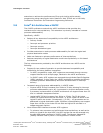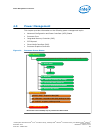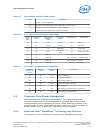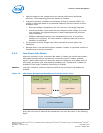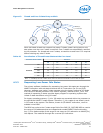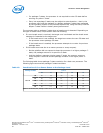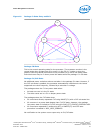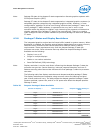
• Multiple frequency and voltage points for optimal performance and power
efficiency. These operating points are known as P-states.
• Frequency selection is software controlled by writing to processor MSRs. The
voltage is optimized based on the selected frequency and the number of active
processor cores.
— Once the voltage is established, the PLL locks on to the target frequency.
— All active processor cores share the same frequency and voltage. In a multi-
core processor, the highest frequency P-state requested among all active
cores is selected.
— Software-requested transitions are accepted at any time. If a previous
transition is in progress, the new transition is deferred until the previous
transition is completed.
• The processor controls voltage ramp rates internally to ensure glitch-free
transitions.
• Because there is low transition latency between P-states, a significant number of
transitions per-second are possible.
Low-Power Idle States
When the processor is idle, low-power idle states (C-states) are used to save power.
More power savings actions are taken for numerically higher C-states. However,
higher C-states have longer exit and entry latencies. Resolution of C-states occur at
the thread, processor core, and processor package level. Thread-level C-states are
available if Intel Hyper-Threading Technology is enabled.
Caution: Long term reliability cannot be assured unless all the Low-Power Idle States are
enabled.
Figure 12. Idle Power Management Breakdown of the Processor Cores
Thread 0 Thread 1
Core 0 State
Thread 0 Thread 1
Core N State
Processor Package State
Entry and exit of the C-states at the thread and core level are shown in the following
figure.
4.2.2
Processor—Power Management
Desktop 4th Generation Intel
®
Core
™
Processor Family, Desktop Intel
®
Pentium
®
Processor Family, and Desktop Intel
®
Celeron
®
Processor Family
Datasheet – Volume 1 of 2 December 2013
52 Order No.: 328897-004






